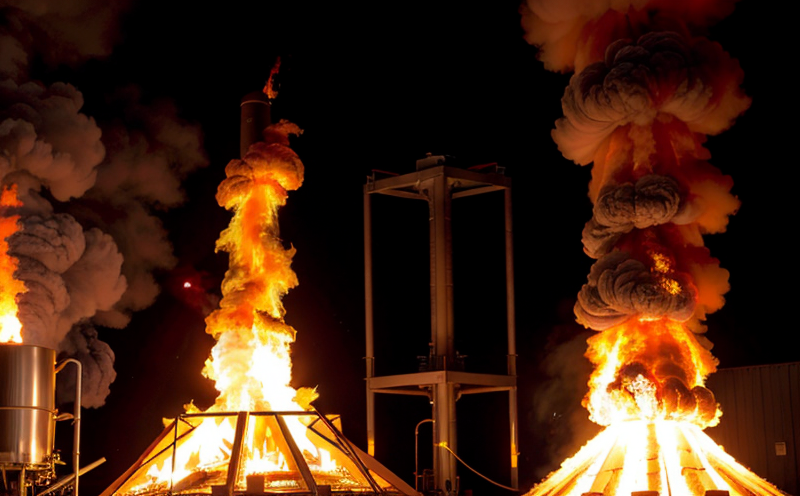Incineration Ash Chemical Safety Testing
The testing of incineration ash is a critical aspect of ensuring environmental and occupational safety. Incineration ash can contain various elements, compounds, and by-products that may pose risks if not properly assessed. This service involves the detailed analysis of these residues to determine their chemical composition and potential hazards. The process includes rigorous sample preparation, analysis using sophisticated instrumentation, and reporting the findings in accordance with international standards.
The first step in this testing is a meticulous sampling procedure designed to ensure that the ash is representative of the entire batch or lot being tested. Proper handling and packaging are crucial to prevent contamination and degradation during transport to our laboratory. Upon arrival, the sample undergoes initial screening to identify any visible contaminants or irregularities.
The core of this testing involves several analytical techniques aimed at identifying and quantifying chemical components present in the ash. These methods include but are not limited to Inductively Coupled Plasma Mass Spectrometry (ICP-MS), Gas Chromatography-Mass Spectrometry (GC-MS), and X-ray Fluorescence (XRF). These instruments provide precise data on elemental composition, volatile organic compounds, and other hazardous substances.
After analysis, our experts compile a comprehensive report detailing the findings. This document includes detailed information about the chemical makeup of the ash, including concentrations of heavy metals like lead, mercury, and arsenic. It also provides recommendations for safe handling and disposal based on compliance with international standards such as ISO 15267-4:2019.
The importance of this testing cannot be overstated given its role in preventing environmental pollution and ensuring worker safety. By identifying potential hazards early, industries can implement appropriate mitigation strategies to protect both the environment and human health.
Industry Applications
- Power generation companies to assess ash from coal or biomass combustion
- Paper manufacturers for waste reduction and compliance with environmental regulations
- Chemical plants dealing with hazardous waste disposal
- Construction firms handling demolition debris containing incineration residues
The results of this testing are invaluable across multiple sectors, providing data necessary for regulatory compliance, risk assessment, and process optimization. This information is essential in making informed decisions about waste management practices and ensuring that all operations adhere to stringent safety protocols.
International Acceptance and Recognition
This service aligns with global standards aimed at promoting safe handling of hazardous materials. Our lab adheres strictly to ISO 15267-4:2019, which sets out the procedures for chemical analysis of incineration residues. Compliance with these standards ensures that our reports are accepted worldwide and recognized by regulatory bodies.
The international acceptance of our testing services extends beyond mere compliance; it also enhances trust in the industry's commitment to sustainability and safety. By adhering to rigorous protocols, we contribute to a safer environment while supporting sustainable practices within various industries.
Use Cases and Application Examples
| Industry Sector | Sample Scenario | Data Collected |
|---|---|---|
| Power Generation | Testing ash from a coal-fired plant to ensure compliance with local regulations. | Concentrations of heavy metals, volatile organic compounds, and other hazardous substances. |
| Paper Manufacturing | Evaluating waste products for disposal methods that minimize environmental impact. | Type of chemicals present in the ash, including potential carcinogens. |
| Construction | Assessing demolition debris to determine safe handling and reuse options. | Elements like lead or arsenic, which can be harmful if not managed correctly. |
The data obtained from these tests play a crucial role in informing decisions regarding waste treatment processes. They help ensure that all materials are disposed of safely, thereby minimizing the risk of contamination and ensuring compliance with international standards.





